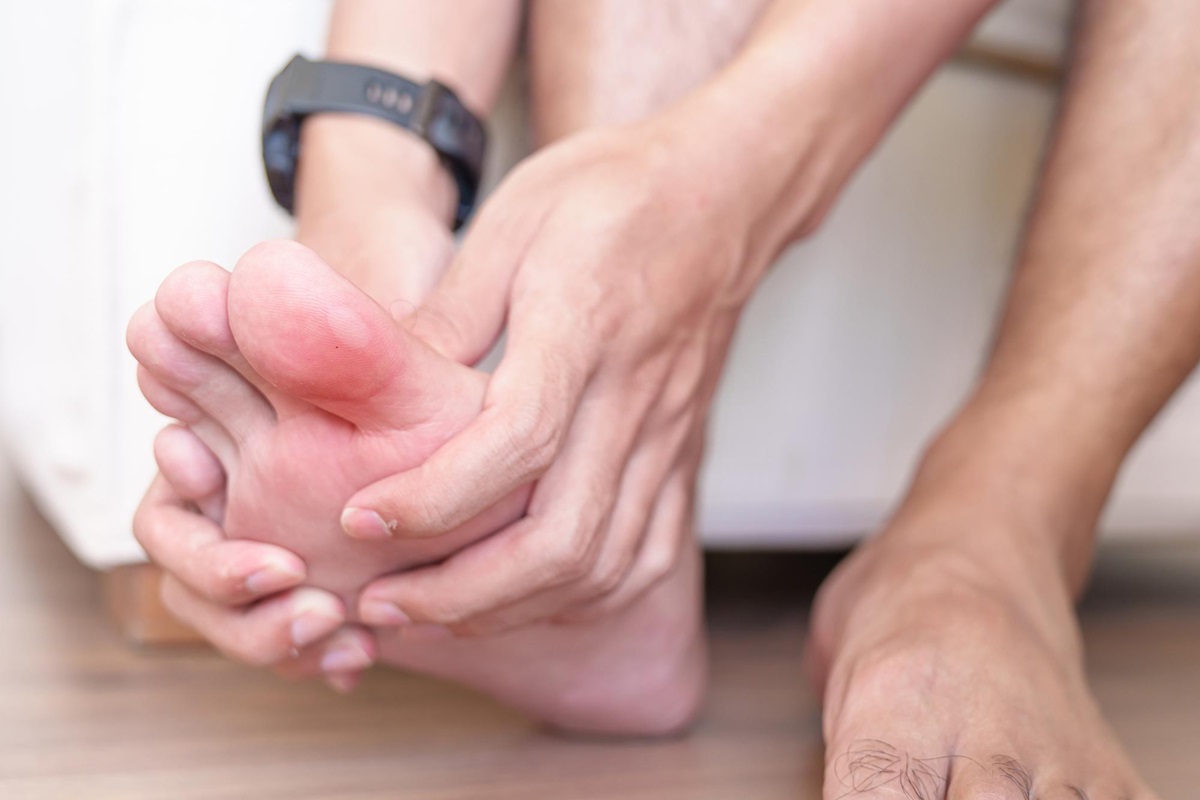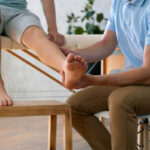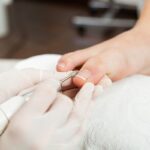Your first toe is not only larger than its’ 4 lesser counterparts but much more important. Aside from being responsible for holding flip flops in place the big toe, or hallux, plays a vital role in movement. We rely on our feet as the foundation for walking, running, jumping and balance with the big toe …
Your first toe is not only larger than its’ 4 lesser counterparts but much more important. Aside from being responsible for holding flip flops in place the big toe, or hallux, plays a vital role in movement. We rely on our feet as the foundation for walking, running, jumping and balance with the big toe as the focal point of that base. But how can a body part so small and light possibly make such an impact? An extraordinary example is Bruce Lee’s famous 1-Inch Punch. This unusual stunt stunned opponents and crowds with seemingly impossible power and force. His hand hovered 1” away from an opponent’s chest before a lightning quick movement resulting in large men being sent flailing backwards. Lee explained this was more than Eastern mysticism; rather due to activation of a complimentary system of body movements starting with the big toe.
Anatomy 101
To understand the importance of the big toe we must first address the functional anatomy of the foot & leg. The big toe joint is the starting point of the foot’s arch. The same arch that collapses in flat feet and gives issues like plantar fasciitis. This arch is maintained by a pulley system of tendons and ligaments with the brunt of the work done by the plantar fascia. The purpose of this thick band of tissue on the bottom of your foot is to move with the big toe and give bounce to the arch. Reach down now and pull your big toe towards your nose. Notice the little pull reconstitutes your arch without effort from your foot. This automatic energy is used to lift your heel off the ground and spring forward walking and running.
Hips (and Toes) Don’t Lie
Believe it or not, optimal big toe functioning in our gait and movement is closely connected with our hips. If you balance on one leg with weight through your big toe, sooner or later the outside of your hip will get a workout. This is good practice for every step we take, using the coordinated pulley system that propels us forward and keeps us balanced. Not a stretch to say then, that weakness and issues with the hips are commonly coupled with flat feet and dysfunction in the foot. Lecturers and trendsetters in the therapy space like Jay Dicharry and Kelly Starrett focus on the importance of core body balance to treat many individual issues. As such, therapy and injury recovery programs commonly emphasize balance between the hips and feet.
All Shapes and Sizes
No two pairs of feet are the same. Wide vs narrow, high vs low arch, long vs short, all offering different biomechanical strengths. Regardless of size or shape, the alignment for proper functioning remains the same. Perhaps the most elite example being East African distance runners. Athletes and Olympians from Kenya and Ethiopia historically dominate foot races in distances ranging from 5k to marathon with textbook form and efficiency. Their feats are accomplished with an average arch height significantly lower than their American and European competitors. How is this possible? Unlike our pampered pedal upbringing, many of these cultures are traditionally unshod for much of their early years. Daily strength and coordination of gait has allowed them to intuitively find alignment regardless of surface or shoe gear. As such, the wear patterns of their racing shoes reflect perfect alignment in gait, finishing with a push through the big toe.
What Can We Do?
Foot & ankle problems largely stem from the issue of improper alignment. The job of your specialist is to offer therapy that will treat symptoms as well as the underlying cause. Issues with painful flat feet are commonly addressed with orthotics to boost the arch and allow the coordination of the big toe in gait. Bunion procedures likewise allow patients to regain function through bony realignment of the big toe joint. One tool we love to use in clinic for this purpose is the MOBO Board. The simple design effectively targets active alignment of the foot, leg and body through balance of the hip and big toe. Regardless of your ailment, speak with our specialists to keep your treatment (and big toe) pointed in the right direction.
If you have any questions or concerns, please reach out to Wisconsin Foot & Ankle Clinic at office@wisconsinfootandankleclinic.com







